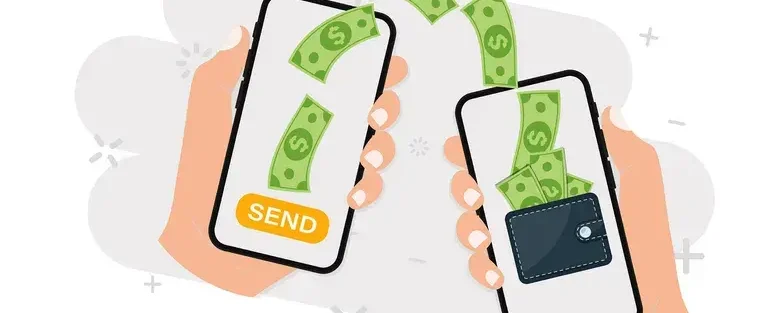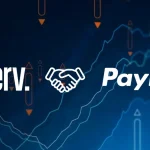In the digital age of business world, payment speed is essential. Whether it’s paying suppliers, vendors, or employees, businesses need payment systems that are fast, reliable, and secure. Slow supplier payments can strain relationships and disrupt supply chains, while fast payments strengthen trust and improve cash flow. Fortunately, modern FinTech innovations – from digital disbursement platforms to global payout orchestration – are making it easier to send money quickly and securely across borders. These solutions leverage the latest technology to provide benefits like instant payment processing, automatic reconciliation, enhanced security, and improved operational efficiency.
Why Fast Supplier Payments Matter For B2B and E-Commerce
Speeding up supplier payments isn’t just about convenience – it’s a strategic advantage. Companies increasingly rely on instant payments to keep vendors, gig workers, and suppliers satisfied and to keep operations running smoothly. By paying suppliers faster, businesses can foster trust and loyalty. In fact, many suppliers reward prompt payers; for example, suppliers often offer 1–2% discounts for settling invoices early (e.g. “2/10 net 30,” meaning 2% off if paid in 10 days instead of 30). Taking advantage of such early-payment incentives improves your bottom line and signals reliability to your suppliers.
Fast payments also help avoid the pitfalls of late payments. Studies show that over half of B2B invoices are paid late, causing cash flow issues and even lost supplier relationships. Paying suppliers on time (or ahead of time) keeps your supply chain strong and gives you an edge with vendors who may prioritize clients who pay promptly with better service or faster delivery. In the e-commerce sector – especially for online sellers and marketplace vendors – getting paid faster means reinvesting in inventory sooner and keeping sales momentum. It’s no surprise that by 2028, nearly half of all businesses plan to make instant payments their go-to method for non-payroll transactions. Speed is becoming the new standard in B2B and e-commerce payments.
The Challenges of Traditional Cross-Border Payments
Why has speeding up supplier payments become such a focus? Traditional payment methods, especially for cross-border transactions, have historically been slow and cumbersome. International wire transfers via networks like SWIFT can take days to clear and incur high fees. Even domestic bank transfers used to move in batches with delays – for instance, in the U.K., bank transfers once took days to settle, whereas now money can be sent from one account to another in seconds with modern faster payment systems. Time zone differences, currency conversions, and compliance checks can further slow down global supplier payments. Manual accounts payable processes add to the delay, with paperwork and approvals dragging out payment cycles.
These legacy payment rails are not built for the always-on digital economy. Suppliers in different countries often face uncertainty about when they’ll receive funds. Lack of transparency and tracking in traditional methods can erode supplier confidence. In short, the old way of sending cross-border payments – relying on banks’ timelines and cutoff times – is too slow for today’s business needs. This is where fast global disbursement solutions come into play, modernizing and accelerating the payout process worldwide.
Digital Disbursement Platforms: Automating Faster Payments
Digital disbursement platforms offer a powerful way to speed up supplier and vendor payments. These platforms allow businesses to send payments electronically (e.g. via ACH, wire, or other electronic methods) through a single system. By leveraging automation and integration, digital disbursements can streamline payments and improve processing times. Routine payout tasks that once took days of manual work can now happen in seconds. For example, a business can schedule an automated batch of supplier payments and the platform will handle the rest – validating details, executing transfers, and even reconciling the payments to invoices automatically.
One major advantage of digital disbursement platforms is their support for instant payment options. They often integrate with real-time payment networks to enable near-instant transfers. Real-time payment (RTP) systems allow funds to move almost immediately between parties through digital channels. A key benefit of using RTP networks is that they eliminate intermediaries like correspondent banks or batch processors, so transactions are processed more quickly and at lower cost than traditional methods. In other words, fewer middlemen means less friction and delay. To deliver instant payouts, these platforms use various methods, including: direct integration with RTP networks (such as The Clearing House RTP in the U.S. or Faster Payments in the UK), integration with payment processors that offer real-time capabilities, and even digital wallets for immediate funds delivery. Digital wallets and mobile payment apps allow suppliers or contractors to receive money in real time on their devices – a convenient option that also adds security through features like tokenization and biometric authentication.
Automation is another key to faster payments. Digital disbursement systems can handle large volumes of payments through batch processing and intelligent routing algorithms. Instead of paying 100 suppliers one by one, a platform can execute 100 payments in one batch, significantly reducing the time and resources required. Advanced algorithms can even optimize the sequence and timing of payments to avoid any bottlenecks, and machine learning tools can detect the most efficient processing patterns. Additionally, features like automatic reconciliation verify and match payments to invoices in real time, giving businesses instant visibility into which suppliers have been paid. This reduces errors and ensures nothing falls through the cracks, further speeding up the end-to-end process.
Crucially, modern platforms support multiple currencies and local payment methods to accelerate global disbursements. Built-in currency conversion means a company can pay an overseas supplier in their local currency without separate bank processes. Supporting many currencies (often dozens) and payment types ensures that payments to overseas vendors don’t get delayed by conversion or banking hold-ups. By integrating compliance checks (KYC/AML) and tax considerations into the workflow, digital disbursement platforms also prevent regulatory hurdles from slowing payments. The result is a seamless, fast payment experience across borders – something traditional systems struggled to achieve.
Digital disbursement platforms leverage automation and real-time payment networks to accelerate supplier payments globally. They connect businesses to multiple payout methods through one interface, eliminating manual processes and delays.
Payouts Orchestration for Fast Global Disbursements
For businesses dealing with suppliers and sellers worldwide, payouts orchestration has emerged as a game-changer. A payouts orchestration platform acts as a centralized hub that manages payouts across multiple payment methods, regions, and currencies. It consolidates diverse payment networks into one unified framework, allowing businesses to choose the most efficient payout option for each situation, ensure compliance with local regulations, and optimize costs and transaction speed. In other words, the system intelligently routes payments via the best channel available – whether that’s an instant domestic transfer, an e-wallet credit, a prepaid card, or a traditional bank deposit – based on factors like cost, speed, and currency.
This orchestration approach greatly simplifies global supplier payments. Instead of integrating separately with dozens of banks and payment providers, companies can plug into a single platform (often via one API) that connects to many endpoints. The platform’s algorithms automatically select the fastest route for each payout, giving suppliers quicker access to funds and reducing fees in the process. For example, if you need to pay a supplier in another country, the orchestration engine might determine that an instant card payout via Visa or Mastercard network is the quickest method as opposed to an international wire. In fact, new services now enable businesses to send funds instantly to a recipient’s debit or prepaid card in 190+ countries using global card networks. These kinds of options bypass slow correspondent banking routes.
Modern payout orchestration platforms integrate a wide array of payment modes under one roof, such as: bank transfers (ACH, SEPA, SWIFT), digital wallet transfers (PayPal, Alipay, etc.), real-time payment networks (like Zelle or UK Faster Payments), push-to-card payments (Visa Direct, Mastercard Send), and even cash pickup services. The intelligent routing will pick the optimal method. This not only boosts speed but also simplifies compliance – the platform ensures each transaction meets regional regulations automatically, avoiding delays or rejections. Crucially, payout orchestration gives businesses the agility to expand globally without overhauling their payment infrastructure for each new market. It’s a scalable solution: as you onboard suppliers in new countries or regions, the platform already has a compliant, fast payout method available.
Another benefit is cost optimization. Fast global disbursement doesn’t have to mean expensive. By avoiding banking delays and high transfer fees with instant, low-cost payout channels, businesses can save money while speeding up payments. For instance, sending an instant payment to a supplier’s card or digital wallet might cost far less in fees than a traditional bank wire – and it gets there faster. Over hundreds of transactions, these savings add up. Plus, paying promptly can reduce costs associated with late payments (like penalties or lost early-pay discounts).
Benefits of Fast Global Supplier Payments
Implementing fast global disbursement solutions yields significant benefits for B2B clients and e-commerce sellers alike:
-
Stronger Supplier Relationships: Paying suppliers quickly builds goodwill and trust. Suppliers that receive prompt payments are more likely to prioritize your business and may offer better terms or service. It demonstrates reliability, which is the foundation of long-term partnerships.
-
Improved Cash Flow & Flexibility: For suppliers and contractors, faster payments mean improved cash flow on their end – they have funds on hand to reinvest in materials, inventory, or operations. This stability in your supply chain translates to fewer disruptions for your business. On the flip side, if you’re an e-commerce seller receiving disbursements from a platform, getting paid faster means you can restock or expand more quickly. Fast payouts enable a more agile business cycle.
-
Competitive Advantage: Embracing instant or near-instant payments can set you apart in the market. Companies that adopt instant payments as a strategy see it as an investment in growth and relationships. In tight markets, being known as a buyer who pays promptly can make you a customer of choice for in-demand suppliers. For online sellers, fast payouts can attract more sellers to your marketplace or platform, knowing they’ll get their earnings quickly.
-
Cost Savings: Speed and cost efficiency often go hand-in-hand with modern payment tech. By using digital platforms, businesses can avoid many of the fees of traditional cross-border payments and even unlock cost savings. As noted earlier, capturing early payment discounts through faster payments directly saves money. Also, automating payments reduces administrative costs and errors, which can otherwise be costly to fix.
-
Transparency and Tracking: Digital disbursement solutions usually come with dashboards and notifications that let both payer and payee track payment status in real time. This transparency reduces the uncertainty and inquiries that often accompany traditional payments (“Has the wire arrived yet?”). With real-time tracking, suppliers know when funds are on the way, which enhances confidence. Internally, your finance team can more easily monitor outgoing cash flow and reconcile accounts, improving overall financial management.
In summary, fast global disbursements empower businesses to operate at the speed of the digital economy. Whether you’re a B2B company paying overseas suppliers or an e-commerce marketplace disbursing earnings to sellers, adopting these faster payment strategies is crucial. Instant and automated payment systems ensure your partners get paid promptly, which keeps your supply chain resilient and your partners happy. As fintech innovations like real-time payments networks and payout orchestration continue to mature, speedy supplier payments are becoming the new norm – and those who embrace them stand to gain in efficiency, savings, and stronger business relationships.





